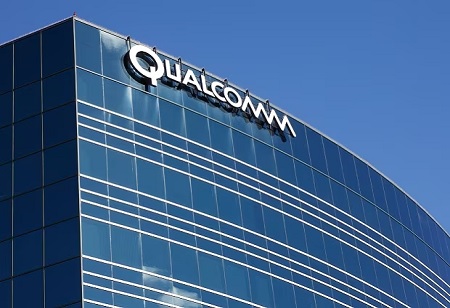
Qualcomm CEO Considers Samsung for Chip Foundry Diversification

 Cristiano Amon, the CEO of Qualcomm, a prominent US semiconductor company, has been contemplating a strategic collaboration with Samsung Electronics in the realm of semiconductor manufacturing. This potential collaboration has surfaced amidst discussions about the risks associated with relying solely on Taiwan Semiconductor Manufacturing Company (TSMC) for smartphone chip production.
Cristiano Amon, the CEO of Qualcomm, a prominent US semiconductor company, has been contemplating a strategic collaboration with Samsung Electronics in the realm of semiconductor manufacturing. This potential collaboration has surfaced amidst discussions about the risks associated with relying solely on Taiwan Semiconductor Manufacturing Company (TSMC) for smartphone chip production.
During a media briefing held at the W Hotel in Taipei, Taiwan, Amon responded to a question from a foreign journalist regarding the risks involved in depending solely on TSMC. He expressed his consideration for adopting a dual-sourcing production strategy, involving both TSMC and Samsung Electronics.
Amon emphasized the importance of TSMC's foundry production currently but acknowledged the potential benefits of diversifying production partners. He stated that while transitioning to a dual-sourcing model would require significant effort, Qualcomm is open to collaboration with both TSMC and Samsung Electronics, signalling a commitment to exploring this approach further.
The discussion around diversification of production processes for Qualcomm's "Snapdragon 8 Gen 5" smartphone chip has gained traction, with initial production entrusted to Samsung Electronics' foundry. However, issues like overheating prompted subsequent generations to be manufactured by TSMC. Despite this, Qualcomm recognizes Samsung Electronics' advancements in next-generation 2-nanometer (nm) advanced fine process foundry technology and is contemplating reallocating production volumes to achieve diversification in its manufacturing processes.
This potential collaboration between Qualcomm and Samsung Electronics represents a strategic move to mitigate risks associated with single-sourcing production and leverage the strengths of different semiconductor manufacturers. It reflects Qualcomm's commitment to ensuring the reliability and competitiveness of its semiconductor supply chain while exploring avenues for innovation and advancement in chip manufacturing technology.

